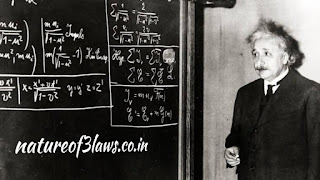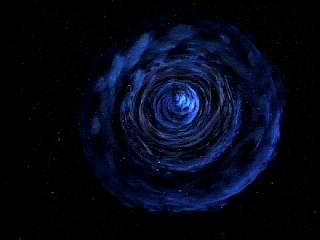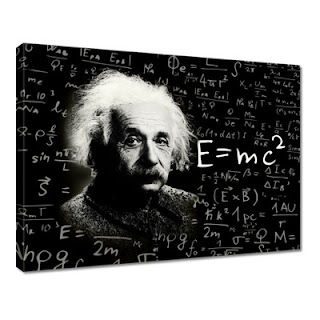This formula is given by Albert Einstein in 21 November 1905 , in the paper “Does inertia of a body depends upon its energy content” mass energy equivalence is a product of the special theory of relativity and physicist Henry Poincaré described it as a paradox.

Mass energy equivalence is a very important principle of relativistic physics , which give a relation between mass and energy. This principle tell us that anything which have mass has an equivalent amount of energy and vice versa, vice versa means if mass contain energy then energy contain mass. And this fundamental quantities are related to each other by Einstein’s famous formula ie. E = mc^2. Where c is speed of light ( c = ~3×10^8 m/s). According to this formula, if anyone wants to calculate the energy of a body having mass m then he has to multiply it with the squared of speed of light ie. c^2. It means if anyone is travelling with the squared of the speed of light then , then he has been converted into energy. Then from this we can say that mass can’t be exist without energy , and energy can’t be exist without mass. If energy is exist then somewhere mass will also exist , and if mass is present then energy will also present , because we know that energy can’t be exist without mass.
E = mc^2 , then m = E/c^2
Energy content of any body is directly proportional to it’s mass, if mass is large then energy corresponding to it is also large.
And we have seen in special theory of relativity that mass is a relativistic quantity, mass of the body increases if it’s velocity is increasing. And here conversation of mass into energy is occurring at speed of light, it’s means the mass of the body is approximately infinite. Every body has its two mass, one when it is in rest and one when it is in motion.

When it is in rest , then mass corresponding to it is called rest mass or invariant mass. This mass is invariant to all frame of reference. But when body is in motion then it’s mass changes , and the variation of mass due to motion ( relativity of mass ) and mass corresponding to this motion is called relativistic mass. Which is given as:
m = m0/√[1-(v^2/c^2)]
When a body is in motion then it’s total energy is greater than its rest energy.
Now we are going to derive the formula for E = mc^2
DERIVATION FOR E = mc^2

Consider the relation
m = m0/√[1-(v^2/c^2)] , squaring both sides we get, m^2 = m0^2/[1-(v^2/c^2)] , taking denominator to LHS.
m^2(c^2 -v^2)/c^2 = m0^2 ,, on solving we get
m^2c^2 – m^2v^2 = m0^2c^2
Now differentiate it, then we get
2mc^2dm – ( 2mv^2dm + 2vm^2dv) = 0
Then
2mc^2dm = 2mv^2dm + 2vm^2dv
Cancelling 2m , we get;
c^2dm = v^2dm + mvdv
Now take a small kinetic energy dk for small velocity. Then
dk = dw = fds
dk = fds = (dp/dt)ds
dp/dt = d(mv)/dt = vdm/dt + mdv/dt
Putting the value of dp/dt into (dp/dt)ds ,, we get;
dk = (vdm/dt)ds + (mdv/dt)ds
And can written as ;
dk = (vds/dt)dm + (mds/dt)dv
Then
dk = v^2dm + mvdv
And v^2dm + mvdv it is equal to c^2dm
Then dk = c^2dm ,, so now integrate it
Int(dk) = int( c^2dm )
We get
K = mc^2 = E ,, and we can write Purley
E = mc^2
This is the derivation for the mass energy equivalence.
